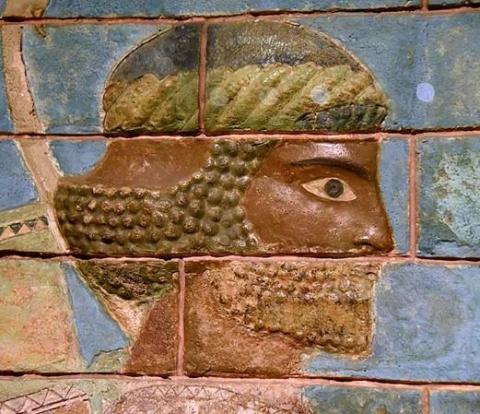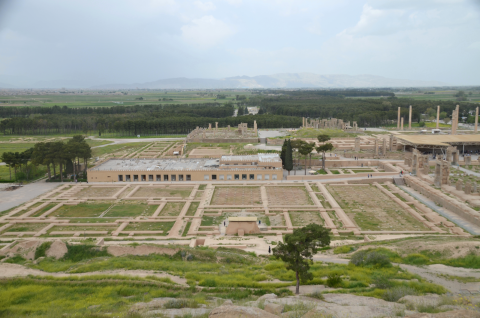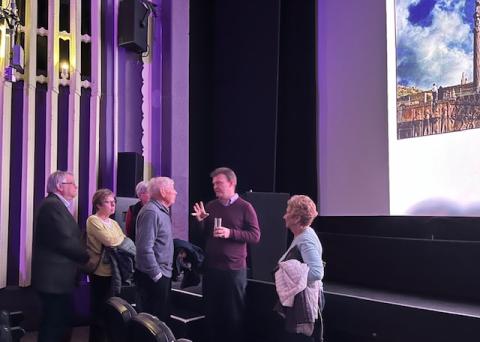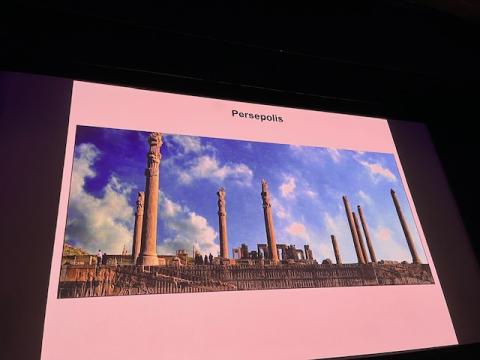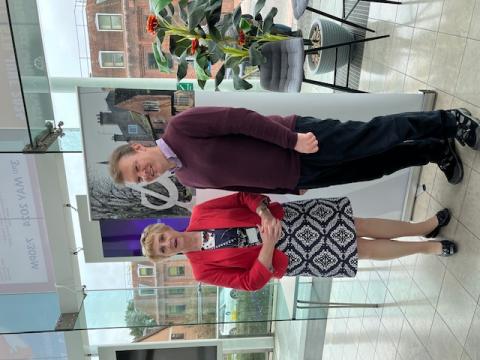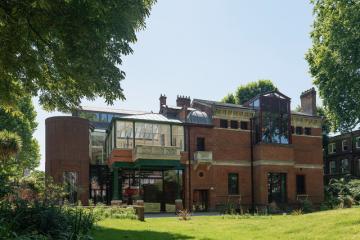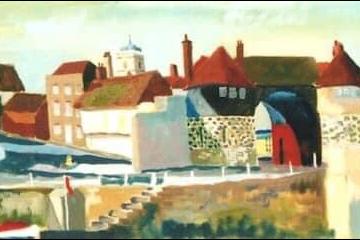For the October meeting of the Arts Society Horsham, Daniel Robbins guided us on a grand tour of Leighton's studio ho
Persepolis: Art, Architecture and Ideology of the Persian Empire
Persepolis: Art, Architecture and Ideology of the Persian Empire
17 Apr 2024
What is Persepolis and the significance of its art, archeology and ideology? Like the April shower outside The Capitol theatre in Horsham on this April day, we were showered with the rich gems of this great ancient civilisation and its legacy to the present day.
In this fascinating and enlightening lecture by James Renshaw, we learnt about how Persepolis was built by King Darius I (522-486BC) and then further enlarged by his son Xerxes and his grandson Artaxerxes I. Persepolis is now of course the world’s greatest archeological sites situated in south-western Iran. The palatial complex, largely destroyed by Alexander III of Macedon (the “Great”), still retains the remains of a once magnificent staircase, towering majestic columns and footprints of grand state rooms, echoing a powerful and sophisticated Empire that lasted two centuries.
Persepolis was built as the seat of government and used to receive dignitaries and to celebrate the riches of the Empire, as emblazoned in the stone carving of exotic animals and human figures represented in different ethnic attire, reflecting a multicultural empire that stretched from the Mediterranean in the west to the Indus valley in the east, from the Eurasian Steppes in the north to Egypt and Arabia in the south.
For such a vast empire, the Persians maintained order and unity through an ideology of tolerance where religious and cultural diversity is respected and celebrated. The saying was that “Do what you want as long as you pay your taxes!”. The Empire was also administered most efficiently through a network of road and postal system. Travel lodges for messengers on horsebacks were built along the multiple routes of the empire, enabling speedy communication.
The sophistication and wealth of the this ancient civilisation was all the more inspiring given their humble origin as nomadic tribes from the Steppes. Perhaps it is because of the tradition of living among nature that inspired the creation of gardens - the paradise on earth with its geometric design, water feature and exotic plants from all over the Empire which predates the Islamic garden that we know so well.
So, apart from travel lodges, trunk roads, a postal system, beautiful gardens and that diversity of cultures is a unifying strength, what else have the Persians given us? Well, we have inherited their fashion sense in headwear and trousers! The coins that we use with the image of the monarch or head of state was also first coined by the Persians!
There is much to admire of this sophisticated ancient civilisation but importantly perhaps is the realisation that we tread a common ground in terms of its influence and legacy in our modern world. The lecture ends with a rapturous applause and we came away feeling much enriched if somewhat challenged for our Eurocentric perspective of history, but that can only be a very good thing in our time.
JOIN OUR MAILING LIST
Become an instant expert!
Find out more about the arts by becoming a Supporter of The Arts Society.
For just £20 a year you will receive invitations to exclusive member events and courses, special offers and concessions, our regular newsletter and our beautiful arts magazine, full of news, views, events and artist profiles.
FIND YOUR NEAREST SOCIETY
MORE FEATURES
On Monday, 6th October, the Delf Room at the Guildhall in Sandwich was abuzz with creativity and pride as local young


